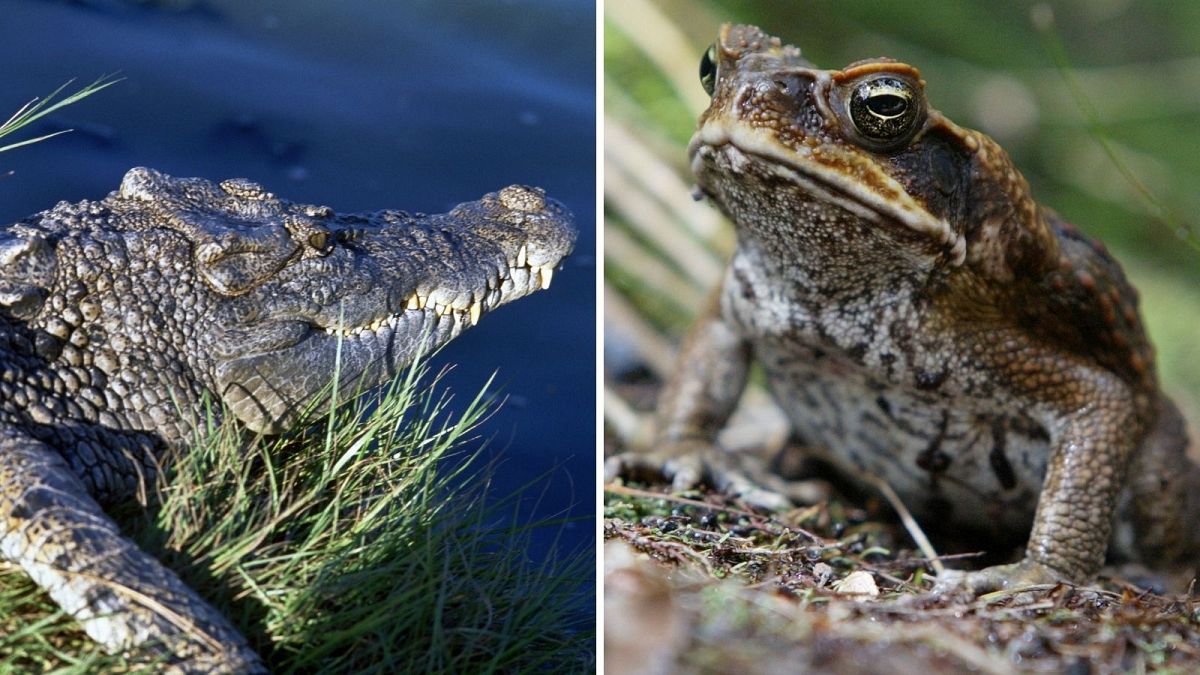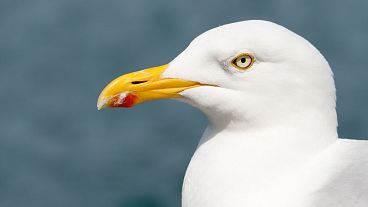The taste aversion method could save many other native animals.
Cane toads might look like a tasty snack to crocodiles, but they have a habit of poisoning their predators.
Imported from South America in the 1930s, these pests have left a trail of native animal casualties across Australia - including goanna lizards, snakes and freshwater crocodiles.
But scientists and Indigenous rangers have come up with a clever way to get the crocs to think twice before snapping a cane toad.
By injecting (de-poisoned) toad carcasses with a chemical that makes crocodiles sick, and leaving the bodies as bait, they are training them to avoid eating the animals in future.
“Our baiting completely prevented deaths in areas where cane toads were arriving and decreased deaths by 95 per cent in areas where toads had been for a couple of years,” says Dr Georgia Ward-Fear from Macquarie University, lead author of the new study.
Why is it important to save freshwater crocodiles?
Scary to some, freshwater crocodiles play a vital role in their environments.
“Losing freshwater crocodiles to cane toads will mean that bottom feeders in our rivers will eat all the bait such as judembah (cherrabin, a large freshwater prawn) and lardy (bony bream, an estuarine fish), leaving no fish for the barramundi and stingray to eat,” explains ranger coordinator Paul Bin Busu.
- Not only does the loss of freshwater crocodiles (Crocodylus johnstoni) upset the balance of local ecosystems; they are a culturally significant animal and part of traditional owners’ Dreamtime stories in the region.
How did the team set up toad baits?
Scientists from Sydney’s Macquarie University worked with Bunuba Indigenous rangers and the Department of Biodiversity, Conservation and Attractions (DBCA) in Western Australia to trial a canny solution.
October to May is the dry season in the country’s tropical north. It sees river systems shrivel to a series of isolated pools, supporting far fewer of the prawns, fish and amphibians that freshwater crocodiles normally eat.
“They end up congregating in large numbers with very little food, and as toads begin to use these waterbodies for rehydration, the two come into contact and we see large numbers of crocodile deaths over a few months.”
Between 2019 to 2022, Bunuba and DBCA collected hundreds of cane toads, removed the poisonous parts and injected the bodies with enough of a nausea-inducing chemical to make crocodiles temporarily sick.
Using canoes, rangers left over 2,000 defanged toads by riverbanks across four large gorge systems in the northwest Kimberley region.
Under the ‘conditioned taste aversion’ experiment, they also deposited control baits of chicken meat with no nausea-inducing additives, and monitored the responses of crocodiles.
A win for behavioural ecology
“The first three days we noticed the crocodiles were taking the cane toads then they would go away,” recalls Bin Bisu.
“Then we noticed they would smell the cane toad before eating, and on the last day we noticed that it was mostly the chicken necks getting eaten.”
Using nocturnal surveys and wildlife cameras to monitor crocodile and toad numbers, the team found that areas where these trials took place had greatly reduced crocodile mortality rates compared to unbaited control sites.
“These are really exciting results that provide land managers with tools to use ahead of the invasion, but that also work behind the invasion front,” says Sara McAllister from DBCA.
“Together we’ve shown that collaborations between academics, Indigenous rangers and land management agencies can be really effective for conservation science,” she adds.
Senior author Professor Rick Shine says the study shows the successful use of conditioned taste aversion as a behavioural ecology technique.
“At a time when globalisation has massively increased the spread of invasive species, behavioural ecology can protect vulnerable ecosystems,” he concludes.















